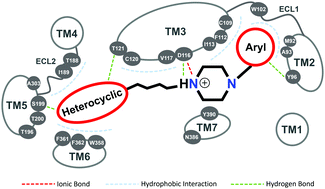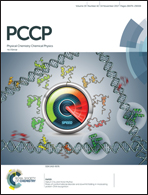Revealing vilazodone's binding mechanism underlying its partial agonism to the 5-HT1A receptor in the treatment of major depressive disorder†
Abstract
It has been estimated that major depressive disorder (MDD) will become the second largest global burden among all diseases by 2030. Various types of drugs, including selective serotonin reuptake inhibitors (SSRIs), serotonin-norepinephrine reuptake inhibitors (SNRIs), and serotonin receptor partial agonist/reuptake inhibitors (SPARIs), have been approved and become the primary or first-line medications prescribed for MDD. SPARI was expected to demonstrate more enhanced drug efficacy and a rapid onset of action as compared to SSRI and SNRI. As one of the most famous SPARIs, vilazodone was approved by the FDA for the treatment of MDD. Because of the great clinical importance of vilazodone, its binding mechanism underlying its partial agonism to the 5-HT1A receptor (5-HT1AR) could provide valuable information to SPARIs’ drug-like properties. However, this mechanism has not been reported to date; consequently, the rational design of new efficacious SPARI-based MDD drugs is severely hampered. To explore the molecular mechanism of vilazodone, an integrated computational strategy was adopted in this study to reveal its binding mechanism and prospective structural feature at the agonist binding site of 5-HT1AR. As a result, 22 residues of this receptor were identified as hotspots, consistently favoring the binding of vilazodone and its analogues, and a common binding mechanism underlying their partial agonism to 5-HT1AR was, therefore, discovered. Moreover, three main interaction features between vilazodone and 5-HT1AR have been revealed and schematically summarized. In summary, this newly identified binding mechanism will provide valuable information for medicinal chemists working in the field of rational design of novel SPARIs for MDD treatment.



 Please wait while we load your content...
Please wait while we load your content...